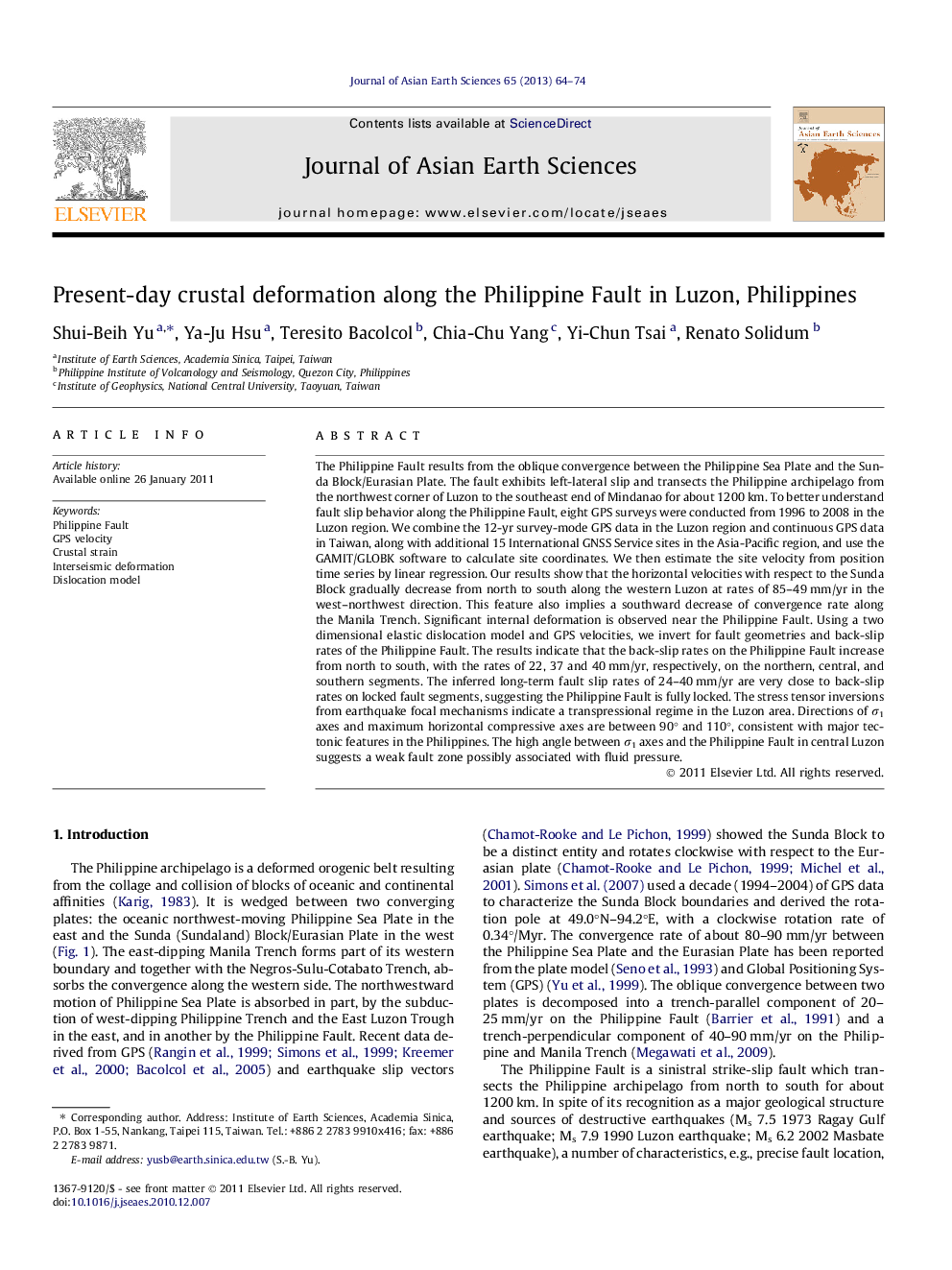| کد مقاله | کد نشریه | سال انتشار | مقاله انگلیسی | نسخه تمام متن |
|---|---|---|---|---|
| 4731198 | 1640400 | 2013 | 11 صفحه PDF | دانلود رایگان |
The Philippine Fault results from the oblique convergence between the Philippine Sea Plate and the Sunda Block/Eurasian Plate. The fault exhibits left-lateral slip and transects the Philippine archipelago from the northwest corner of Luzon to the southeast end of Mindanao for about 1200 km. To better understand fault slip behavior along the Philippine Fault, eight GPS surveys were conducted from 1996 to 2008 in the Luzon region. We combine the 12-yr survey-mode GPS data in the Luzon region and continuous GPS data in Taiwan, along with additional 15 International GNSS Service sites in the Asia-Pacific region, and use the GAMIT/GLOBK software to calculate site coordinates. We then estimate the site velocity from position time series by linear regression. Our results show that the horizontal velocities with respect to the Sunda Block gradually decrease from north to south along the western Luzon at rates of 85–49 mm/yr in the west–northwest direction. This feature also implies a southward decrease of convergence rate along the Manila Trench. Significant internal deformation is observed near the Philippine Fault. Using a two dimensional elastic dislocation model and GPS velocities, we invert for fault geometries and back-slip rates of the Philippine Fault. The results indicate that the back-slip rates on the Philippine Fault increase from north to south, with the rates of 22, 37 and 40 mm/yr, respectively, on the northern, central, and southern segments. The inferred long-term fault slip rates of 24–40 mm/yr are very close to back-slip rates on locked fault segments, suggesting the Philippine Fault is fully locked. The stress tensor inversions from earthquake focal mechanisms indicate a transpressional regime in the Luzon area. Directions of σ1 axes and maximum horizontal compressive axes are between 90° and 110°, consistent with major tectonic features in the Philippines. The high angle between σ1 axes and the Philippine Fault in central Luzon suggests a weak fault zone possibly associated with fluid pressure.
► Using 1996–2008 GPS data, we derive a new velocity field in the Taiwan–Luzon region.
► We found a southward decrease of converging rate along the Manila Trench.
► Using a 2-D dislocation model, we invert for back-slip rates of the Philippine Fault.
► Modeling results indicate the Philippine Fault in Luzon is nearly fully locked.
► The high angle between σ1 axes and the Philippine Fault suggests a weak fault zone.
Journal: Journal of Asian Earth Sciences - Volume 65, 25 March 2013, Pages 64–74
